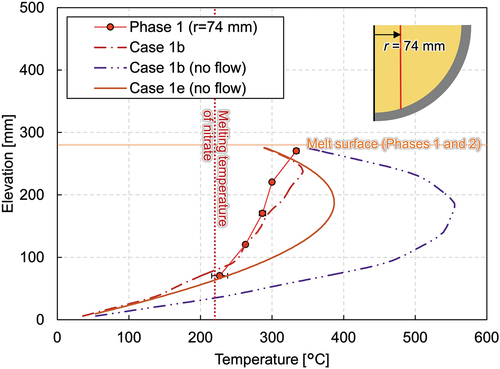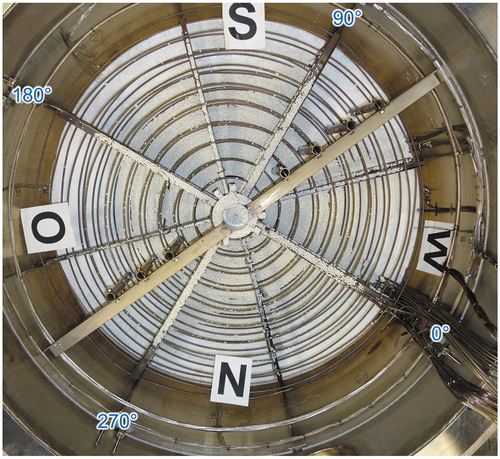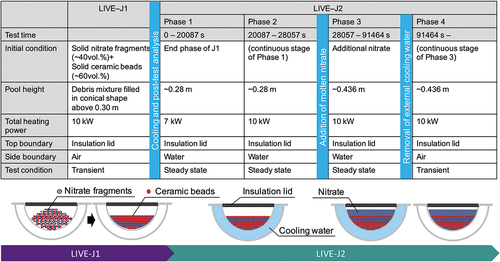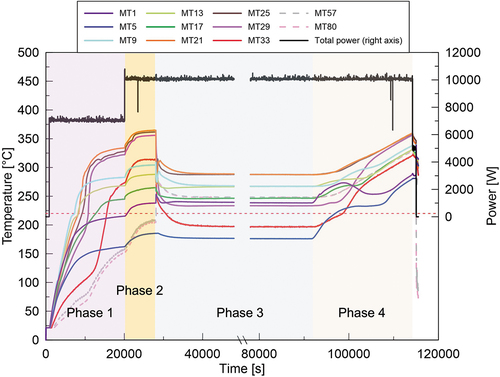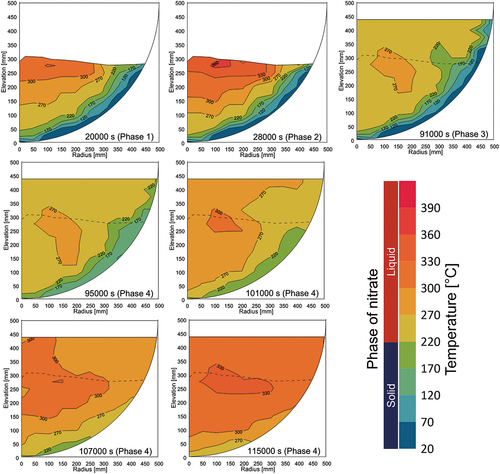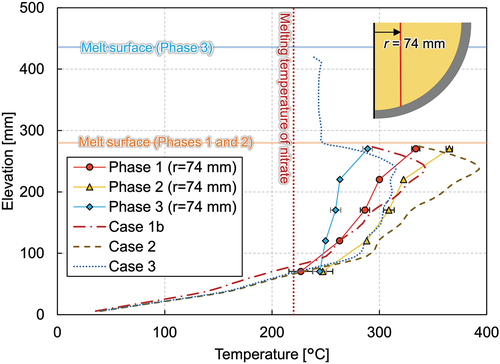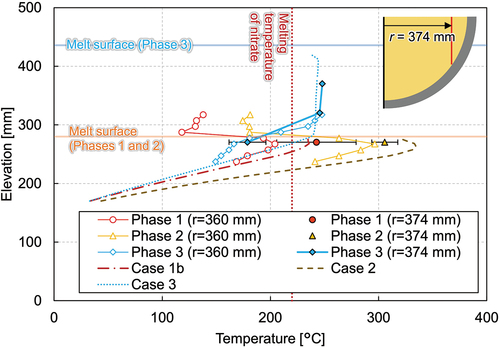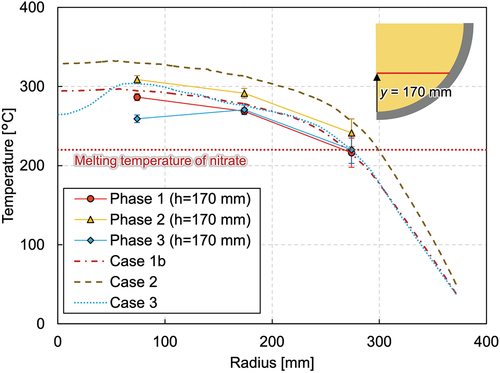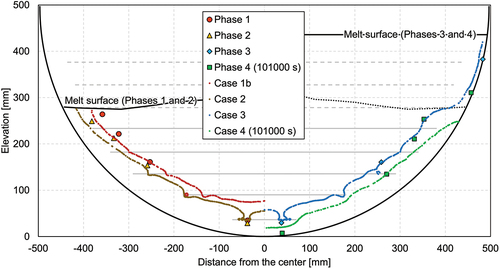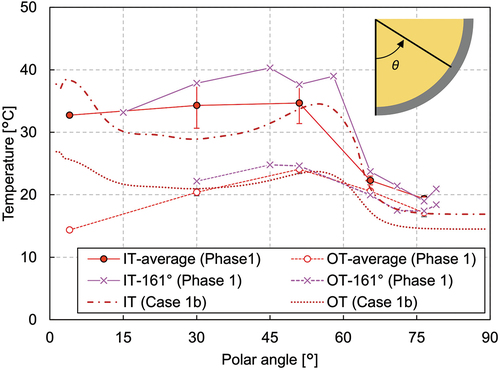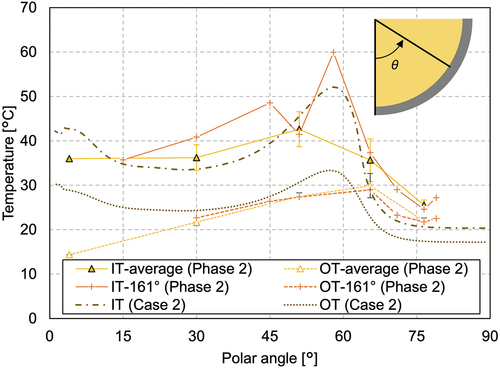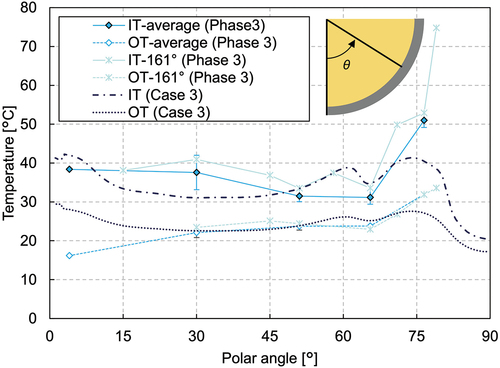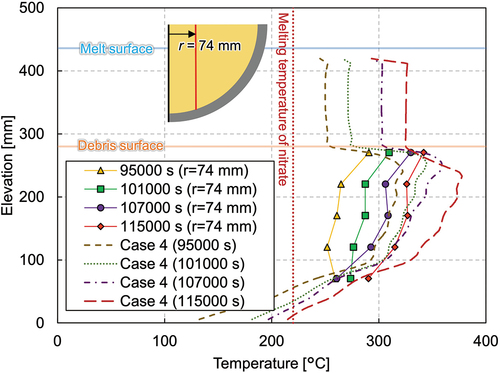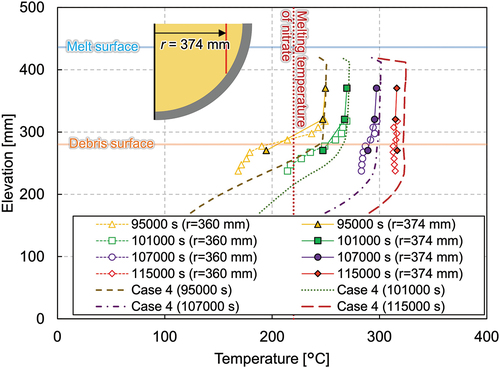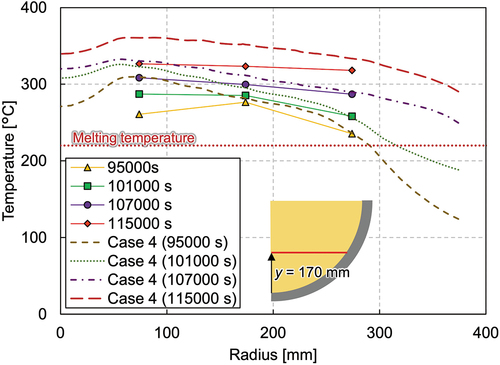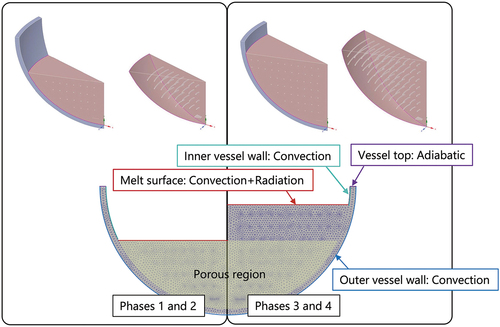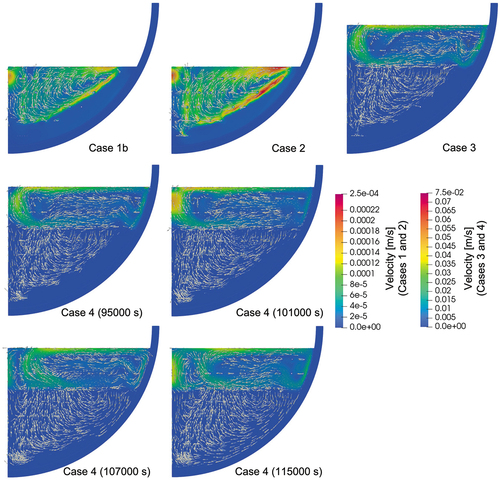Figures & data
TABLE I Thermal Properties of Stainless Steel AISI316Ti*
Fig. 1. Scheme of the LIVE-3D facility and test vessel.Citation10

TABLE II Thermal Properties of RIMAX*
TABLE III Thermal Properties of Nitrate Salt*
Fig. 2. Initial debris contour with location of heating planes and thermocouples. Four MTs at one position indicate four thermocouples at the same radius and height, but distributed in 90-deg azimuth intervals.
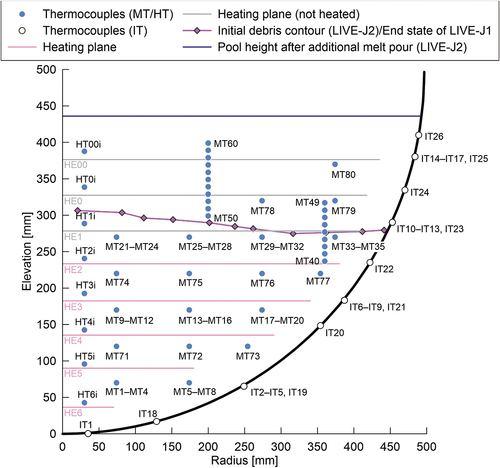
TABLE IV Heating Power of Each Heating Plane in Each Phase
TABLE V Boundary Conditions and Calculation Matrix
TABLE VI Reference Temperatures for Convective and Radiation Boundaries in Phase 4
Fig. 19. Comparison of vertical melt temperature profiles at radius of 74 mm among the different thermal conductivities of the ceramic beads.
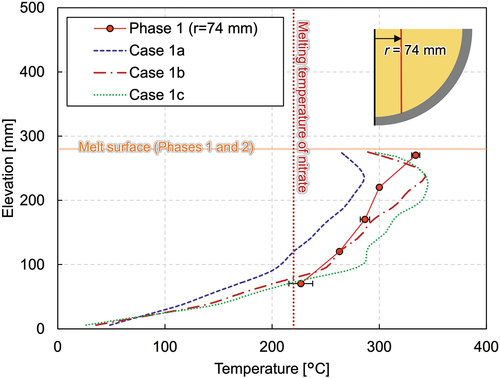
Fig. A.1. Comparison of vertical melting temperature profiles at a radius of 74 mm among different calculation geometries.
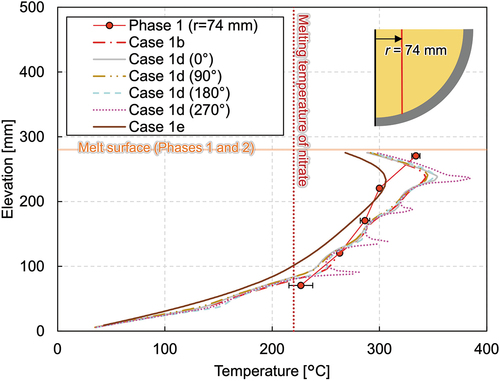
Fig. A.2. Comparison of crust thickness between different calculation geometries—case 1b: sector model, case 1d: full model, and case 1e: full model with homogeneous heating.
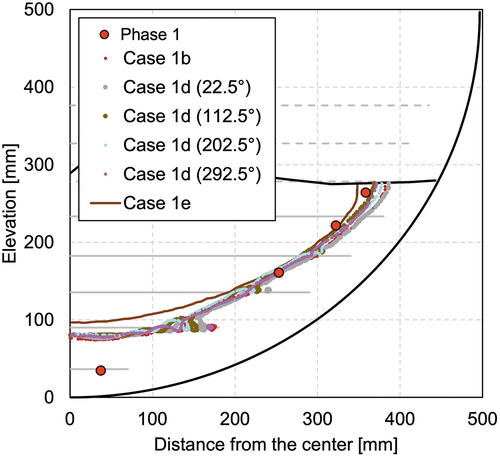
Fig. A.3. Comparison of temperature and velocity contours between the cases with and without heater elements.
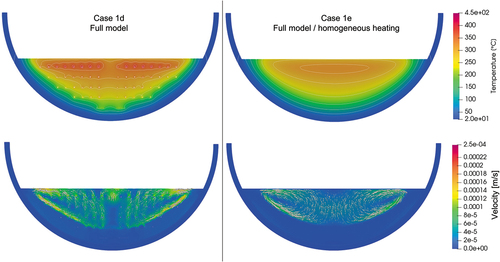
Fig. A.4. Vertical melting temperature profiles at a radius of 74 mm with an assumption of no-flow condition.
